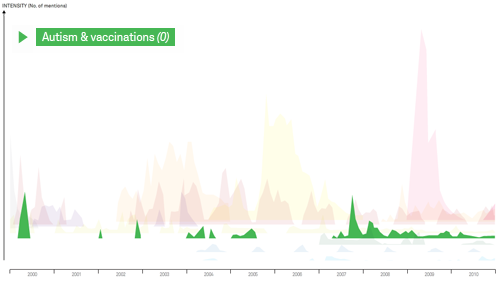It's a chilling read, revealing a sinister story of dishonest and selective data reporting, deliberate withholding of information, anti-vaccination bias and monetary self-interest set in motion by the controversial Andrew Wakefield, main author of the - now retracted - 1998 Lancet study that basically gave the whole autism anti-vaccination movement the wind they needed to set sailing.
In an additional excellent blog post at the BMJ Group blogs Deer writes:
This week, the BMJ begins a series which lays bare the MMR scandal in detail never published before. Drawing on interviews, documents, and properly obtained data, collected during seven years of inquiries, we show how one man, former gastroenterology researcher Andrew Wakefield, was able to manufacture the appearance of a purported medical syndrome, whilst not only in receipt of large sums of money, but also scheming businesses that promised him more. His was a fraud, moreover, of more than academic vanity. It unleashed fear, parental guilt, costly government intervention, and outbreaks of infectious disease.
Much of this was already known, as exemplified by this article from March last year, but the importance of these reports in a reputable peer-reviewed medical journal lies in that they set a precedent for how extraordinary unscientific claims about vaccines, or any medical treatment for that matter, should be approached.
The best blog entry so far about the whole thing comes from ORAC, whose blog Respectful Insolence has long been my preferred source for anti-vaccination debunking, but there is another informative summary at Friendly Atheist. Twitter is of course also buzzing.

Ref: Information is Beautiful
A brilliant interactive visualization was also published today, a bit too coincidentally I think, at Information is Beautiful showing the intensity of media reports about autism and vaccinations during the past decade. Check it out and compare the autism-vaccine scare with other media scares. (What happened in 2000 and 2007?)
Hi, Daniel!
ReplyDeleteI found your blog through ResearchBlogging.org's post feed, and I really like what I see so far.
That graph over on Information Is Beautiful was really interesting, too --- I'd never heard about the killer wasps. Killer BEES, yes, but killer wasps are even scarier. (I also found it funny that the #4 Big Scary Threat, by number of mentions, seems to be violent video games. We pick some weird things to be freaked out about, don't we?)
As far as what happened in 2000 and 2007 to spike the vaccine/autism coverage, here are my guesses: the spike at 2000 might still reflect coverage stemming from Wakefield's paper (the graph STARTS at 2000, so we don't know if that peak stands on its own or is actually a slice of a larger, multi-year peak), and I think sometime in 2007 Hannah Poling's parents sued the federal government over her autism-like condition, which they thought was aggravated by vaccines.
Hey, thanks! And thanks for commenting. I agree that the things we pick to panic over are pretty hilarious sometimes... or rather, that the media picks for us to panic over. I like your explanations for the 2000 and 2007 picks, well spotted. :)
ReplyDelete